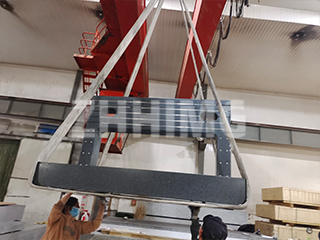Granite surface plates, also known as granite flat plates, are essential tools in high-precision measurement and inspection processes. Made from natural black granite, these plates offer exceptional dimensional stability, high hardness, and long-lasting flatness—making them ideal for both workshop environments and metrology labs.
Proper usage and regular maintenance can significantly extend the service life of a granite surface plate. Its non-corrosive, non-magnetic, and electrically insulating properties, combined with a low thermal expansion coefficient, ensure consistent accuracy over long periods, even in demanding industrial conditions.
Key Features of Granite Surface Plates
-
Stable and Non-Deforming: Granite undergoes natural aging over time, which eliminates internal stress and ensures long-term material stability.
-
Corrosion and Rust Resistance: Unlike metal surface plates, granite does not rust or absorb moisture, making it ideal for humid or corrosive environments.
-
Acid, Alkali, and Wear Resistant: Offers strong chemical resistance, suitable for a variety of industrial settings.
-
Low Thermal Expansion: Maintains precision under fluctuating temperatures.
-
Damage Tolerance: In the event of impact or scratching, only a small pit is formed—no raised burrs or distortions that would affect measurement accuracy.
-
Maintenance-Free Surface: Easy to clean and maintain, requiring no oiling or special treatment.
Application Scope
Granite surface plates are primarily used for high-precision inspection, calibration, layout, and tooling setup. They are widely applied in:
-
Precision manufacturing plants
-
Metrology laboratories
-
Automotive and aerospace industries
-
Tool rooms and QC departments
They are especially valuable in scenarios where consistent flatness, rust-free performance, and thermal stability are critical.
Usage Considerations
Today’s users no longer focus solely on the number of contact points between the workpiece and the granite surface. Modern practice emphasizes overall flatness accuracy, especially as both workpiece sizes and surface plate dimensions continue to increase.
Since surface contact point quantity often correlates with manufacturing cost, many experienced users now prioritize flatness certification over unnecessary contact point density—leading to smarter and more economical choices.
Summary
Our granite surface plates provide a reliable foundation for accurate measurement and stable support for inspection tools. Whether in a production workshop or a metrology lab, their durability, precision, and ease of use make them a trusted choice for professionals around the world.
Post time: Aug-04-2025

